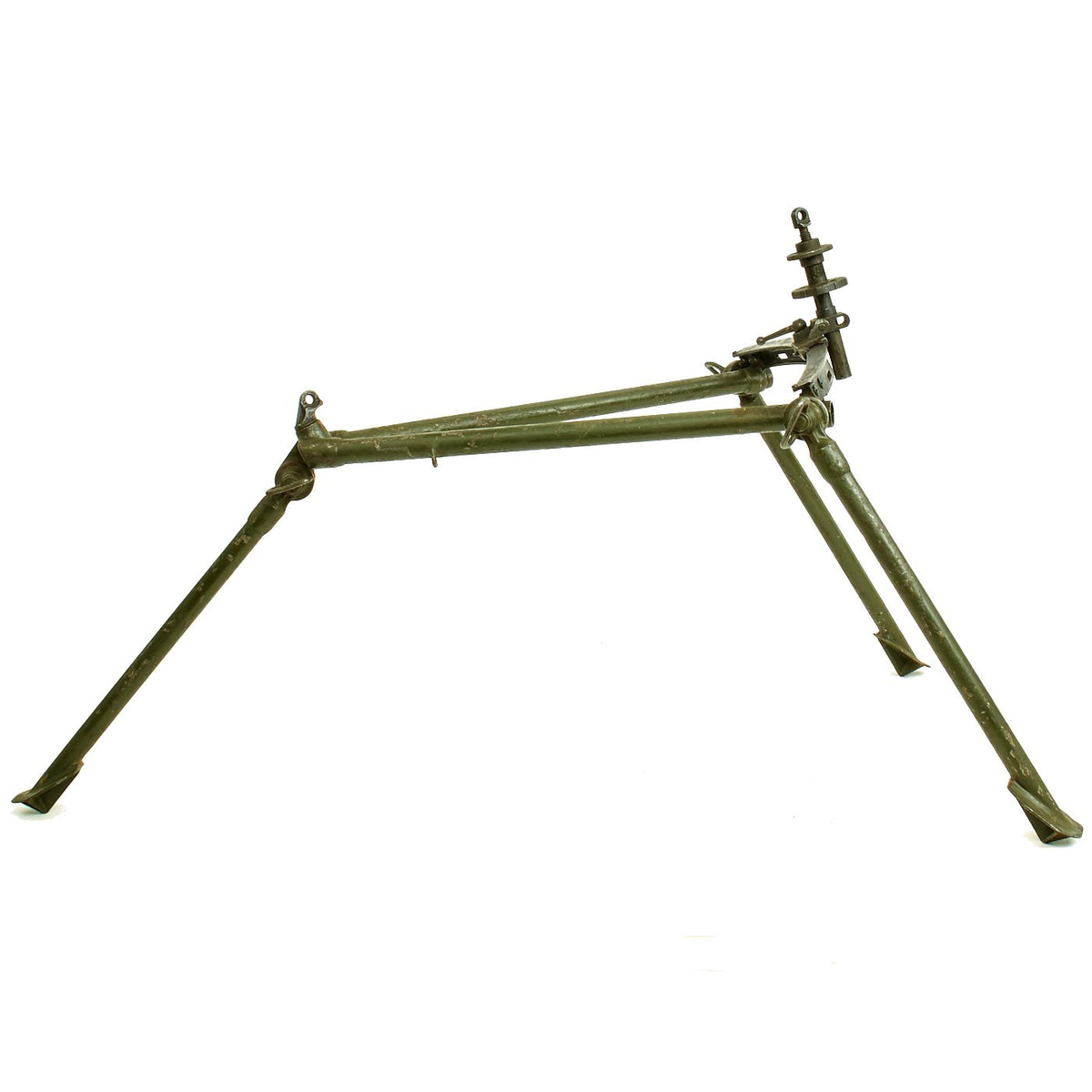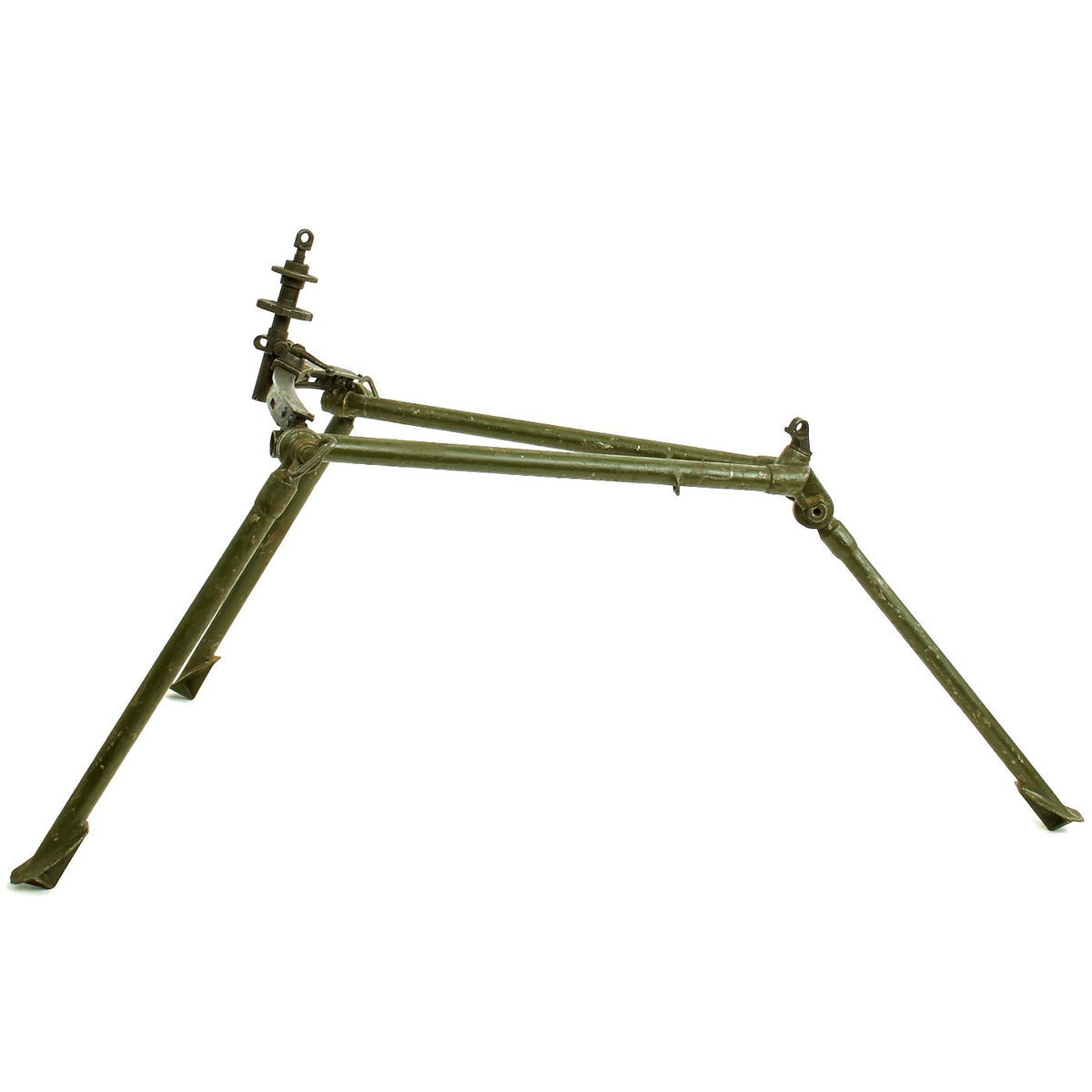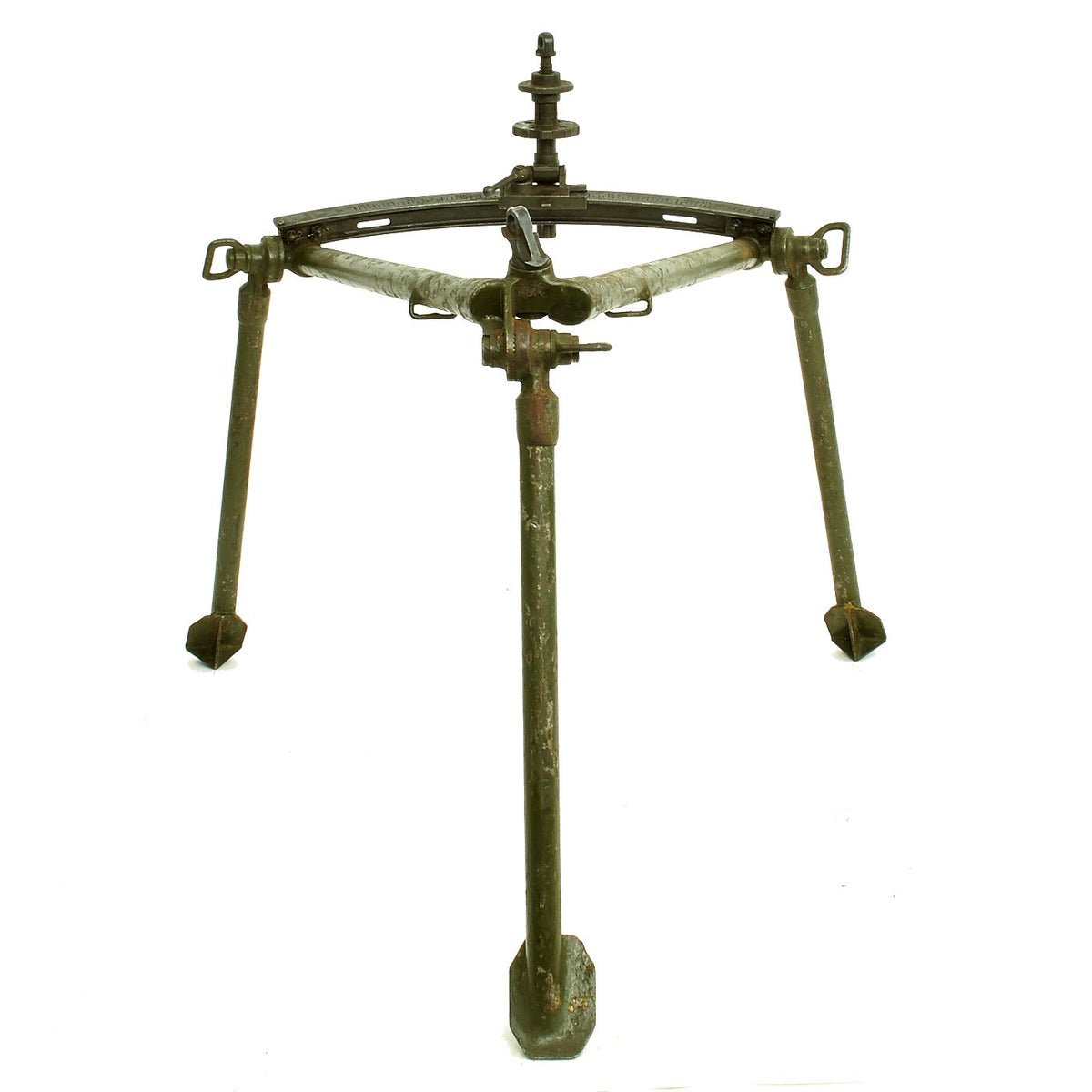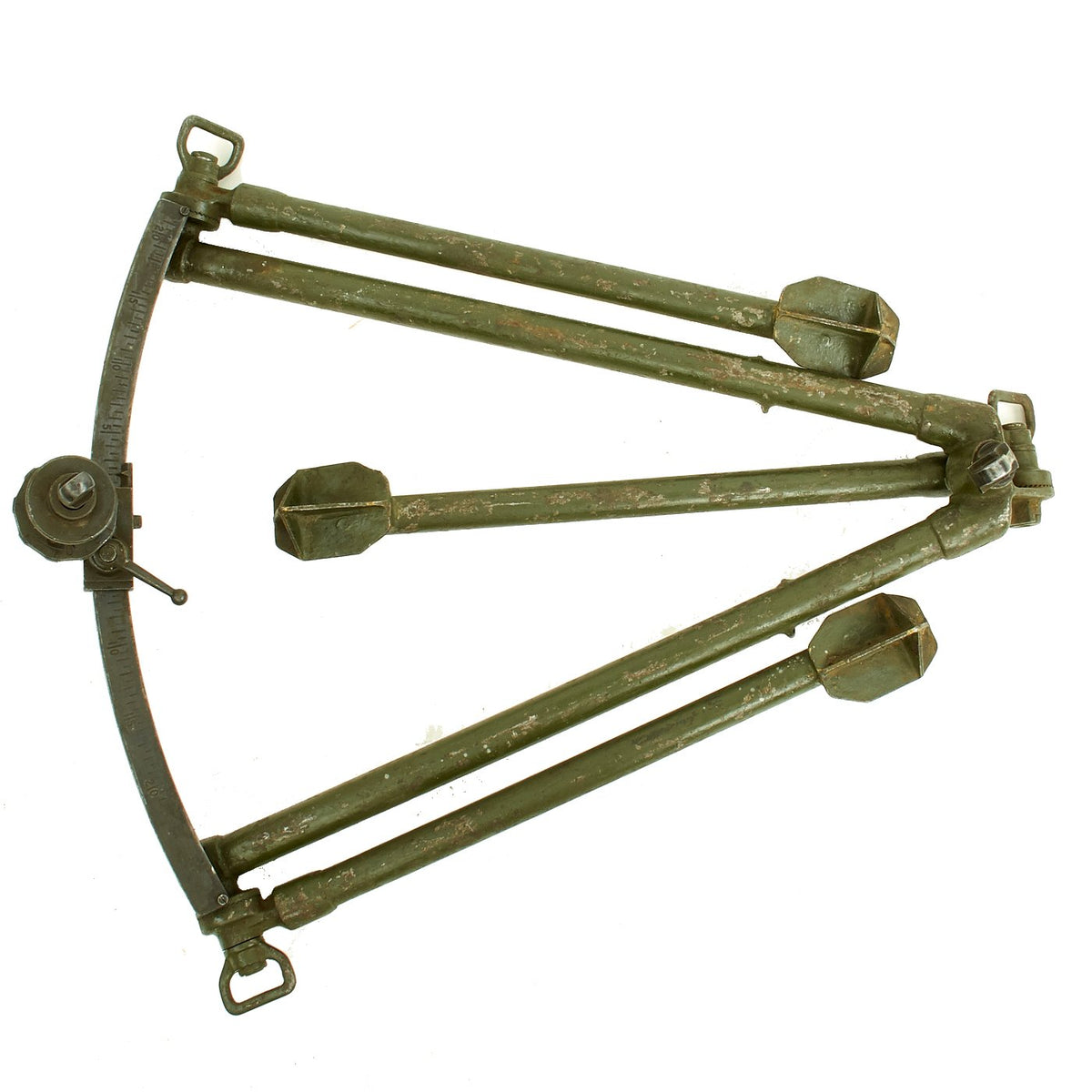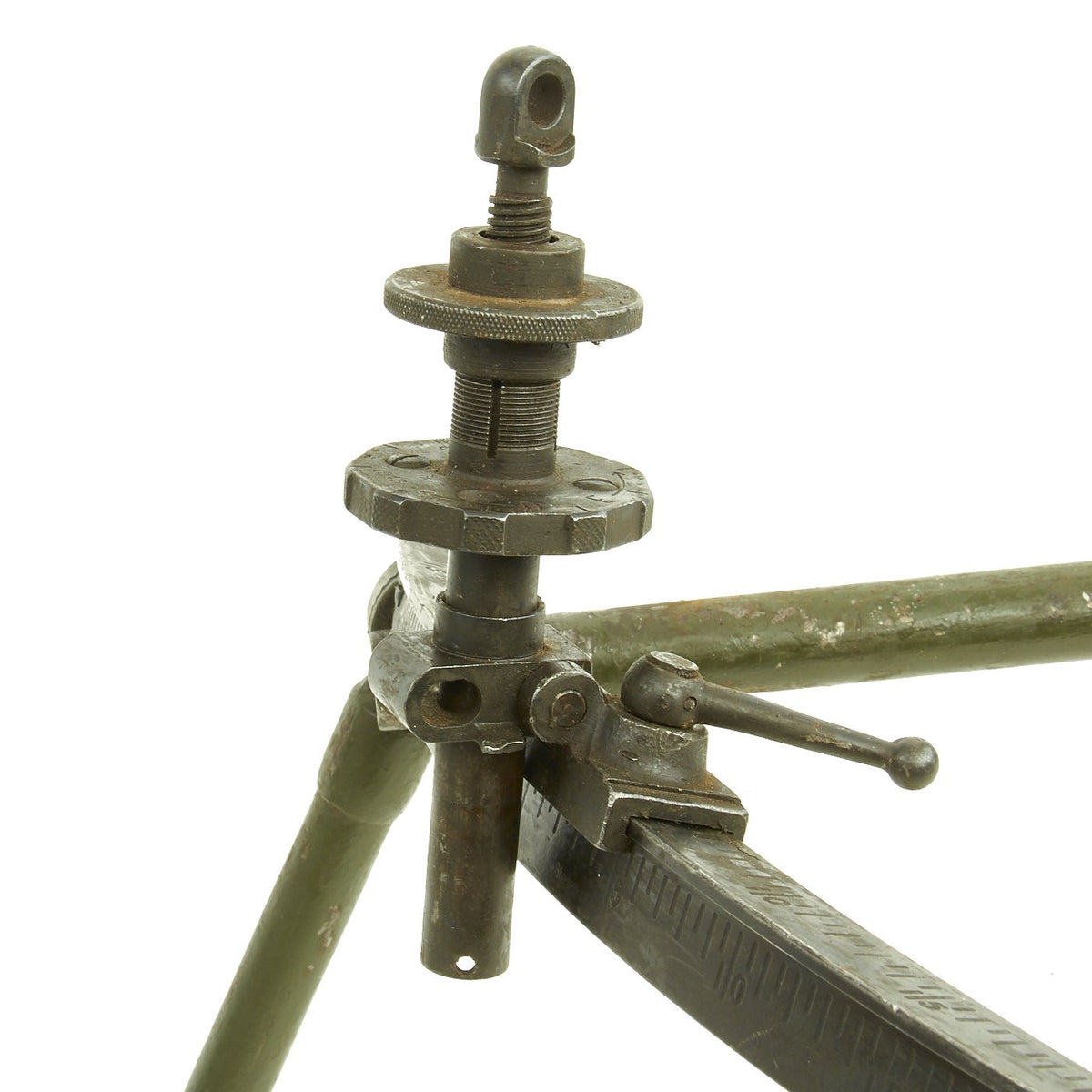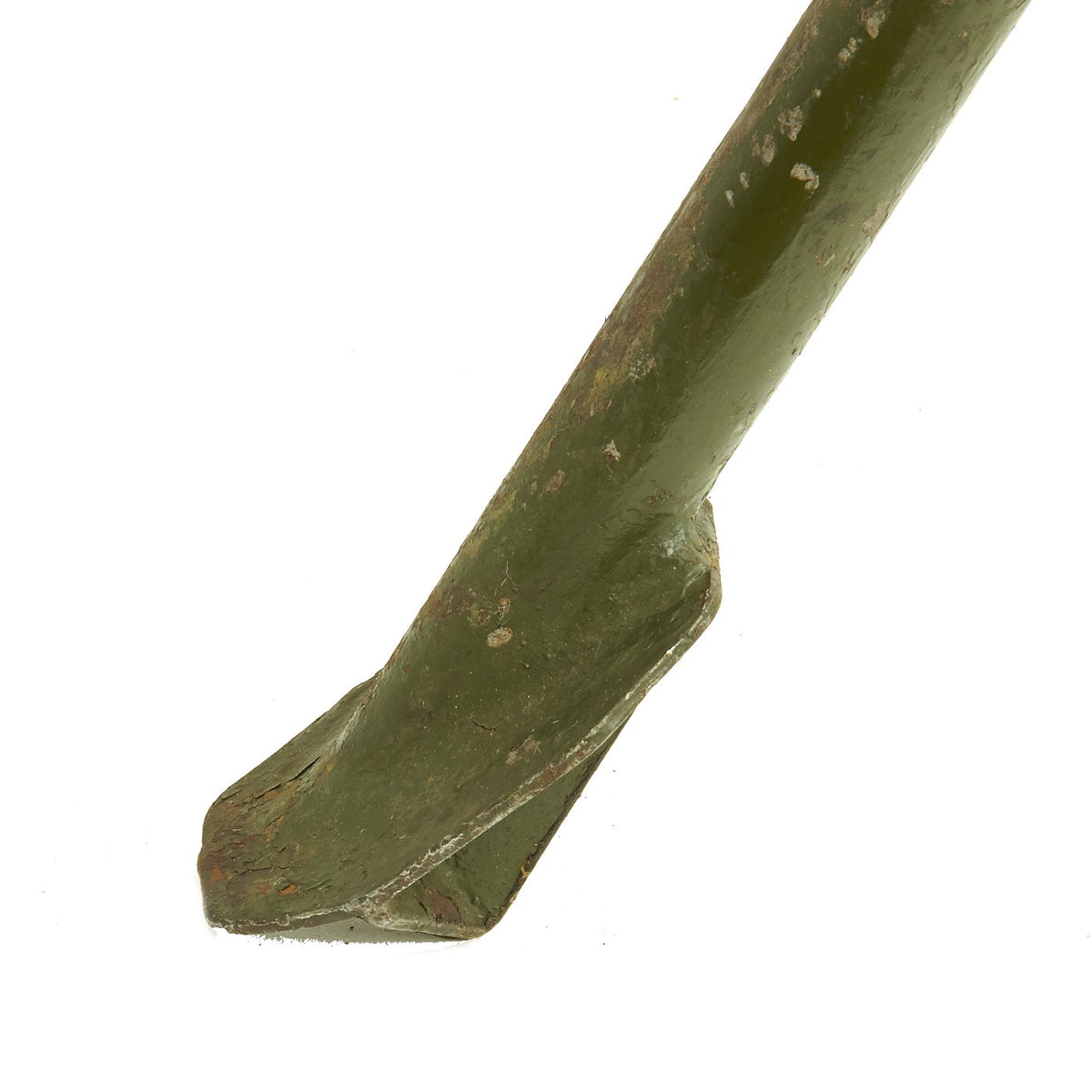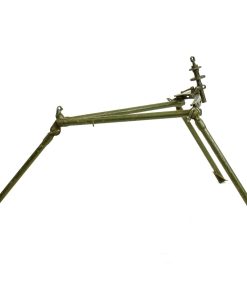Original British WWII Bren LMG MkII Tripod by Canadian Cycle & Motor Company Original Items
$ 995,00 $ 248,75
Original Item: Only One Available. This is a great example of a complete, hard to find Bren LMG MkII tripod, a standard ground mount used with all versions of the Bren LMG for accurate sustained fire. It is equipped with a complete traverse and elevation system (T&E), along with the sustained fire traverse stops. This is the simplified version of the tripod, introduced shortly after Dunkirk to help speed production.
This example is painted in the standard Canadian arsenal green, and is maker marked near the front mounting bracket with C C M / No. 3269. This indicates manufacture by the Canadian Cycle & Motor Company Ltd., a large supplier during the war. Canada has a large amount of natural resources, and it’s location away from the German Bombers made it an ideal area for production. Founded in 1899, the company still exists today, mostly known as a maker of hockey equipment.
This example is in great shape, and does not have any issues that we are aware of. All wing nuts are functional, and it sets up and collapses correctly. The T&E works great, and locks in place correctly.
Fully functional and ready to use to display your Bren!
The production of the Bren began at Enfield in 1937 and for every three guns produced, a tripod was also manufactured. The problem was that the Bren was not capable of fulfilling the role performed by the Vickers. While leaving the tripod as a useful accessory, this meant that the initial importance of it was now secondary. Likewise, the Fixed Line Sight, which was intended to be fitted to the additional open dovetail fixing when the Bren was deployed on the tripod in the sustained fire role, was considered obsolete.
The AA conversion involved a wonderful piece of engineering; the additional leg (which comprised two sections) was stored in the hollow tubes of the main frame when not in use and the fixing point utilized the same fitting and tooling used for the SMLE and the 1907 pattern bayonet. The seminal book, The Bren Gun Saga, does not indicate if this tooling option was merely a decision based on a combination of saving cost and time, or if it was done in order to make possible what resulted in the event of losing one or both sections of the additional leg, A standard-issue SMLE could be used in lieu of this item to create the required conversion. Unfortunately, as with the intended sustained fire option, the AA conversion was a short-lived concept. The speed of aircraft in the late 1920’s compared to that of those encountered just ten years later meant that the rate of fire of the Bren (450 rpm) was too slow to make the use of the AA point a practical option.
The tripods continued in use, despite the drawbacks highlighted above, throughout the war and a simplified version was also produced after Dunkirk, which omitted the AA leg (although curiously retained the ability of the SMLE to still complete the conversion), Many were later converted to allow for use with the American 30 Cal Browning.
Fast Shipping with Professional Packaging
Thanks to our longstanding association with UPS FedEx DHL, and other major international carriers, we are able to provide a range of shipping options. Our warehouse staff is expertly trained and will wrap your products according to our exact and precise specifications. Prior to shipping, your goods will be thoroughly examined and securely secured. We ship to thousands clients each day across multiple countries. This shows how we're dedicated to be the largest retailer on the internet. Warehouses and distribution centres can be located throughout Europe as well as the USA.
Note: Orders with more than one item will be assigned a processing date depending on the item.
Before shipping before shipping, we'll conduct a thorough inspection of the items you have ordered. Today, the majority of orders will be delivered within 48 hours. The delivery time will be between 3-7 days.
Returns
The stock is dynamic and we cannot completely manage it because multiple stakeholders are involved, including our factory and warehouse. So the actual stock may alter at any time. It's possible that you may not receive your order once the order has been made.
Our policy is valid for a period of 30 days. If you don't receive the product within 30 days, we are not able to issue a refund or an exchange.
You can only return an item if it is unused and in the same state as the day you received it. You must have the item in its original packaging.
Related products
Uncategorized
Uncategorized
Uncategorized
Uncategorized
Uncategorized
Uncategorized
Angolan Rebel 1970s era 60mm Inert Display Mortar from Angolan Civil War Original Items
Uncategorized
Uncategorized
Uncategorized
Uncategorized
Uncategorized
Armored Burgonet Helmet & Polearm from Scottish Castle Leith Hall Circa 1700 Original Items
Uncategorized
Uncategorized
Armoured Fighting Vehicles of the World: AFVs of World War One (Hardcover Book) New Made Items
Uncategorized
Uncategorized
Uncategorized
Uncategorized
Uncategorized
